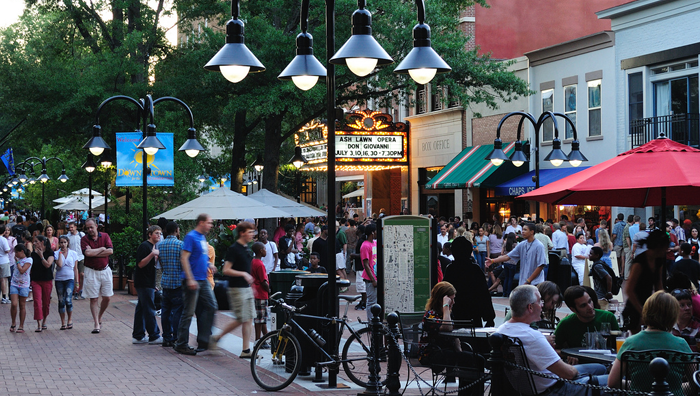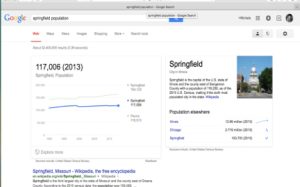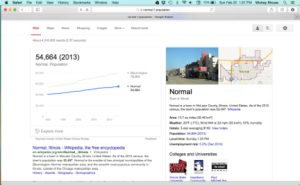
A city that prides itself as being “Always Legendary” should care deeply about its future. On June 16, 1858, Springfield’s beloved Abraham Lincoln famously said, “A house divided against itself cannot stand.” Prior to delivering this historic speech, it was disputed by his law partner, William H. Herndon, who considered Lincoln as morally courageous but politically incorrect. However, Lincoln disagreed, stating “the proposition is indisputably true.”
And how right he was. Isn’t it a fact that we achieve greatness when we work together? Imagine if we stood united on the issue of urban restoration. Imgaine if we all believed it was possible we could once again see a thriving downtown, great schools, better infrastructure and renewed neighborhoods. We could and can achieve it if we believe it. If our house remains divided on this effort, we will not stand and Springfield runs the risk of obscurity and possible extinction.
Having been raised in Springfield my entire life, I have a special affinity for our town. I have memories of heading downtown with my Mom, parking underground, hitting all of the local hotspots and capping off our errand-running with a hotdog at Sears, now the Jesse B. Harris building, site of the IL Department of Human Services. I still recall the smells wafting out the frontdoor and the feeling of sitting on the front steps, enjoying the tasty warm treat. I have fond memories of my first movie, Bambi, at the historic Roxy Theater. Does anyone remember going to the Hub or Myers Brothers, shopping for clothes? Although it’s fun to take a walk down memory lane, the memories aren’t the reason we need to focus on restoring our downtown and surrouding urban neighborhoods. The reason for restoration and rehabilitation is critical. It’s a matter of life or death of a town.
And this is where the debate, or perhaps disconnect, sets in amongst developers, politicians and local commuity activists. Do we focus on restoration? Or shall we continue with unbridled development, sprawling to no end on the city’s west side, just for the sake of ‘new’ and ‘ease’? Do we consider investing tax dollars into rehabilitating and redeveloping existing infrastructure, or put those dollars into creating and extending new infrastructure, adding the burden of long-term maintenance?
To look across the country at what cities are choosing, one clearly sees this is not up for debate, and that disconnection and dysfunction hinder our city’s progress. Decision-makers across the country have realized that it is critical to reinvest in the urban core and that smart growth leads to sustainable communities, and sustainable communities lead to more smart growth.
What is smart growth? Wikipedia.com defines it as “an urban planning and transportation theory that concentrates growth in compact walkable urban centers to avoid sprawl. It also advocates compact, transit-oriented, walkable, bicycle-friendly land use, including neighborhood schools, complete streets, and mixed-use development with a range of housing choices.” As Geoff Anderson, CEO of Smart Growth America puts it, “smart growth means valuing what we’ve already built.”
It’s not an option, as it once was 20 years ago, to allow sprawl for the sheer sake of development. It’s a known fact that Americans are demanding walkable cities where community is a focus, and our great city of Springfield is no different. Look at our population stagnation as an indicator and you will see that cities similar in size and location in Illinois (e.g., Bloomington-Normal) have realized consistent population growth over the past couple of decades due to their vision for their community, focus on smart growth and commitment to work together to make the vision a reality.
According to the Springfield-Sangamon County Regional Planning Commission (SSCRPC) report, the outlook doesn’t look so bright if we don’t unite our house looking toward the future and if we continue to ignore our urban core and linger on with the status quo. As recently as November 12, 2015, the SSCRPC linked to a Smart Cities Council article, which identified smart cities and people being “key to economic growth.” And the SSCRPC report identifies land use development and the physical appearance and visual character of communities as “important elements in promoting orderly growth and attracting new economic development and investment,” lending toward a sustainable community.
The term ‘sustainable community’ doesn’t merely point to a community that chooses to reduce, reuse and recycle. That is more of a micro view of sustainability. A sustainable community is rather a macro definition, referring to a community that can sustain itself as being a viable, vibrant, livable community. It looks at factors such as infrastructure, public works and public safety; affordable housing options; city planning and economic development; updated city-wide technology; renewable energy; quality education and educational factilities; and utilities and recycling. A community achieves sustainability…livability…workability due to a city’s commitment to work together to fulfill a vision of a place where memories are made and community is shared, due to a plan that incorporates smart growth.
For this very reason, we as citizens of this wonderful, “Always Legendary” city, should unite with our decision-makers to incorporate the strategies outlined by the SSCRPC and push for other smart-growth initiatives. It’s our responsibilty to preserve our great city and set a course for its future, rather than ignore the obvious and passively watch its demise. If you don’t believe demise is possible, read about the history of Detroit, MI. It doesn’t take long to watch an iconic city fade into oblivion. We must unite to ensure our house remains standing.


